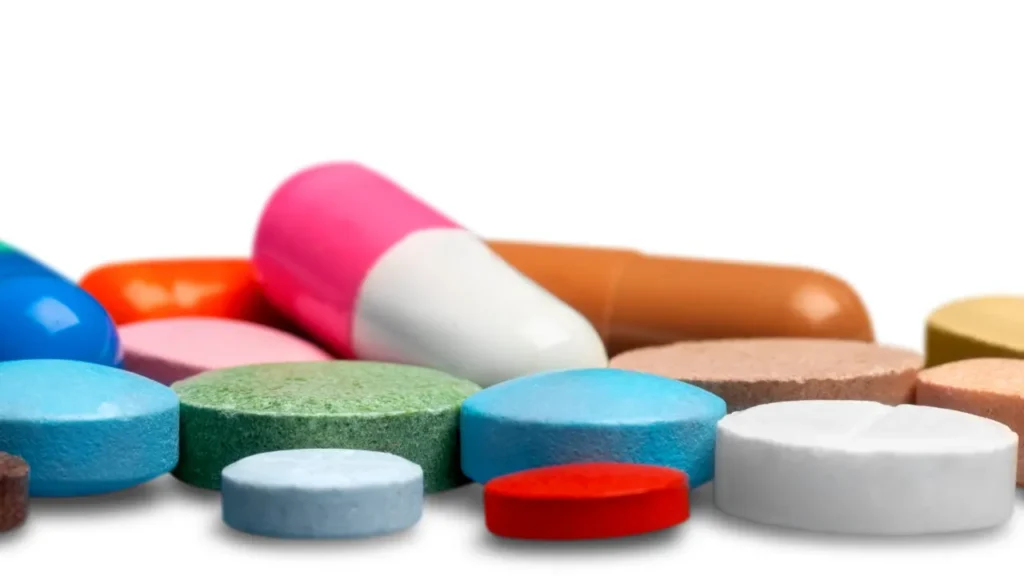Whey protein has significantly increased in popularity in recent years as a result of its many health advantages and varied uses in diet and exercise. It has developed into a crucial supplement for athletes, bodybuilders, and health-conscious people alike because it is a complete protein source with a high biological value. The goal of this article is to give readers a thorough overview of whey protein, including its composition, health advantages, recommended dosage, possible adverse effects, drug interactions, and responsible usage guidelines.
You May Also Like:
5 Great Nootropic Herbs for Energy, Focus, and Productivity
Aristolochia: Benefits, Dosage, Side Effects, Drug Interactions, And Other Important Information
Whey Protein: Benefits, Dosage, Side Effects, Drug Interactions, and Other Important Information is an original (NootropicsPlanet) article.
The Nature of Whey Protein
One of the two main proteins found in milk, along with casein, is whey protein, a byproduct of the cheese-making process. It makes up about 20% of the milk’s overall protein composition. Casein is made into cheese by the coagulation process, which also produces whey as the liquid byproduct. High levels of proteins, lactose, vitamins, minerals, and small amounts of fat are present in this solution.
Depending on the degree of processing, whey protein is divided into three primary categories: whey protein concentrate (WPC), whey protein isolate (WPI), and whey protein hydrolysate (WPH). WPC is 70–80% protein by weight, with lactose and fat making up the remainder. Over 90% of the weight of WPI is made up of protein after additional processing to eliminate lactose and fat. Enzymatic hydrolysis is used to break down WPH into smaller peptides so that the body can absorb them more quickly and easily.
All nine of the essential amino acids, as well as significant amounts of the BCAAs leucine, isoleucine, and valine, are present in whey protein’s extremely rich amino acid profile. These amino acids are essential for maintaining, repairing, and growing muscles.
Health Benefits of Whey Protein
- Muscle Recovery and Growth:
Whey protein is a great supplement for stimulating muscle growth and recovery because of its high biological value and rich amino acid composition, especially the BCAAs. Numerous studies have shown that whey protein supplementation, especially when paired with resistance training, can increase muscle protein synthesis (MPS), stimulate muscular growth, and improve strength.
- Weight Control:
Whey protein can control body weight through multiple different processes. It can aid in reducing appetite and promoting feelings of fullness due to its high satiety value. These can directly help with weight loss. Further aiding in weight management is its thermogenic impact, which raises metabolism and increases energy expenditure.
- Immune System Assistance:
Immunoglobulins, lactoferrin, and other bioactive substances found in whey protein help strengthen the immune system. These elements might lower inflammation, strengthen the body’s protection against infections, and promote intestinal health.
- Antioxidant Properties:
It has been demonstrated that whey protein boosts glutathione synthesis, a strong antioxidant vital to maintaining cellular health and guarding the body against oxidative stress.

Chemistry of Whey Protein
Beta-lactoglobulin, alpha-lactalbumin, bovine serum albumin, and immunoglobulins make up the majority of the complex protein mixture known as whey protein. Firstly, beta-lactoglobulin is the main protein in whey and it presents as a beta sheet in its native state. The beta-sheet is a secondary structure of a protein molecule that involves the folding of the protein chain, stabilized by hydrogen bonding between the amino acid residues. Upon heating, beta-lactoglobulin can self-assemble by turning its molecular structures. Alpha-lactalbumin on the other hand is a quarternery protein. It is the second major protein found in whey. Alpha-lactalbumin is stabilized by the presence of four intramolecular disulfide bonds and the binding of calcium subunit.
In short, whey protein’s chemical structure enables it to interact with many molecular targets in the body. All of these are strongly tied to its biological activity and health advantages.
Physiological Mechanism of Action of Whey Protein
The whey protein’s amino acid composition, bioactive ingredients, and distinctive structural characteristics are responsible for its physiological effects. These characteristics provide whey protein with the ability to affect a number of physiological processes, such as the synthesis of muscle proteins, hunger control, immunological response, and antioxidant defense.
- Synthesis of Muscle Proteins:
Branched-chain amino acids (BCAAs) found in whey protein activate the mTOR signaling pathway, a crucial regulator of muscle protein synthesis. This pathway stimulates the production of new proteins by ribosomes, which helps muscles develop and heal.
- Controlling Hunger:
Cholecystokinin (CCK) and glucagon-like peptide-1 (GLP-1) are two hormones that stimulate satiety and are responsible for whey protein’s effect on hunger. The shape of the protein also affects the speed at which it is absorbed and emptied from the stomach, which helps people feel full.
- Immune Function:
Immunoglobulins, lactoferrin, and lactoperoxidase, which are bioactive components of whey protein, can influence immune function by binding to pathogens. These can increase the activity of immune cells thereby controlling inflammatory processes.
- Protection against Free Radicals:
Studies have shown that whey protein increases the formation of glutathione, a powerful antioxidant, by supplying the essential precursors, such as cysteine. Reactive oxygen species (ROS) can be neutralized by glutathione, which also reduces oxidative stress and shields cells from harm.


Optimal Dosage of Whey Protein
The ideal whey protein intake is influenced by numerous variables such as age, weight, degree of activity, and objectives. The Recommended Dietary Allowance (RDA) for protein intake for inactive individuals is 0.8 grams per kilogram of body weight per day. For those who regularly exercise, particularly through resistance training, this advice might not be sufficient.
Protein intake between 1.2 and 2.0 grams per kilogram of body weight per day is commonly advised for athletes and physically active people to support muscle building and recovery. Combining food sources with whey protein supplements can help you achieve this. It’s crucial to remember that taking too much protein might have negative effects and put extra strain on the kidneys.
Whey protein supplements are frequently recommended to be used with a carbohydrate source, especially post-workout, to boost muscle glycogen replacement and boost recovery. It has been suggested that the ideal carbohydrate to protein ratio for this purpose is 3:1 or 4:1.
Side Effects of Whey Protein
In general, moderate whey protein consumption is regarded as safe. However, overconsumption and individual sensitivity may result in undesirable effects, such as:
- Intestinal Disorders:
Whey protein overdose can result in gastrointestinal issues such as gas, diarrhea, stomach cramps, and bloating. This is frequently caused by lactose intolerance or sensitivity to specific whey protein constituents.
- Kidney and Liver Strains:
Consuming too much protein can strain the liver and kidneys causing long-term harm. Before utilizing whey protein supplements, anyone with pre-existing kidney or liver issues should speak to a healthcare provider.
- Allergies:
Whey protein may cause allergic reactions in people who have a dairy or milk allergy. Hives, itching, swelling, and breathing difficulties are possible symptoms. Stop using it and seek medical advice if you think you may be allergic to whey protein.
Potential Substance Interactions with Whey Protein
Despite being usually regarded as safe, whey protein may interact with a number of drugs and substances, including:
- Antibiotics:
Due to its calcium content, whey protein may decrease the absorption of several antibiotics, including tetracyclines. It is advised to wait at least two hours between taking these antibiotics and consuming whey protein.
- Anti-Osteoporosis Drugs:
Because of its calcium content, whey protein may impair the effectiveness of bisphosphonates, a type of drug used to treat osteoporosis. For advice on when to take whey protein and bisphosphonates, speak with a medical expert.


Best Responsible Uses of Whey Protein
Quality Assurance
Prioritize buying whey protein supplements from reliable producers who follow stringent quality control guidelines. This guarantees that the food is free of impurities and that the protein content is as stated on the label.
- Individualized Dosage:
Adapt your whey protein intake based on your goals, age, weight, and degree of activity. To reduce potential negative effects and stress on the kidneys and liver, you should limit your protein intake.
- A Balanced Diet:
Whey protein should not be utilized as the only source of protein. Rather, it should be used as a supplement to a healthy, diverse diet. To support general health and well-being, make sure you consume enough protein from whole food sources in addition to other macronutrients.
- Keep an Eye on Sensitivity and Allergies:
When utilizing whey protein, keep in mind that certain people may have allergies or sensitivities to milk or dairy products. Stop using immediately and seek medical advice if symptoms appear.
Whey Protein:
Conclusion
In conclusion, whey protein stands out as a popular and versatile dietary supplement that can support muscle growth and repair. A quick recap is that whey protein is derived from milk during the cheese-making process, thus containing a complete protein source of all essential amino acids. Its rapid digestion and absorption make it an excellent choice for individuals seeking to enhance their protein intake, especially athletes and those engaged in resistance training.
Aside from muscle-building, whey protein is also suitable for you if you are looking to control your food intake or manage your weight. It has been long associated with high satiety levels and it can help individuals who are mindful about their nutritional intakes. Potential allergies may still occur in certain individuals even though uncommon and you should consult with healthcare or nutrition professionals to determine the most suitable and effective usage of whey protein in your overall diet and fitness regimen.


References:
- Effects Of Whey Protein and Resistance Exercise on Body Cell Mass, Muscle Strength, and Quality of Life in Women with HIV. Retrieved from: https://pubmed.ncbi.nlm.nih.gov/11740194/#:~:text=Conclusions%3A%20Resistance%20exercise%20significantly%20increased,gains%20achieved%20by%20exercise%20alone
- Whey Protein Ingestion in Elderly Persons Results in Greater Muscle Protein Accrual Than Ingestion of Its Constituent Essential Amino Acid Content. Retrieved from: https://pubmed.ncbi.nlm.nih.gov/19083472/
- Differential Regulation of Mtorc1 by Leucine and Glutamine. Retrieved from: https://www.ncbi.nlm.nih.gov/pmc/articles/PMC4384888/
Important Note: The information contained in this article is for general informational purposes only, and should not be construed as health or medical advice, nor is it intended to diagnose, prevent, treat, or cure any disease or health condition. Before embarking on any diet, fitness regimen, or program of nutritional supplementation, it is advisable to consult your healthcare professional in order to determine its safety and probable efficacy in terms of your individual state of health.
Regarding Nutritional Supplements Or Other Non-Prescription Health Products: If any nutritional supplements or other non-prescription health products are mentioned in the foregoing article, any claims or statements made about them have not been evaluated by the U.S. Food and Drug Administration, and such nutritional supplements or other health products are not intended to diagnose, treat, cure, or prevent any disease.
